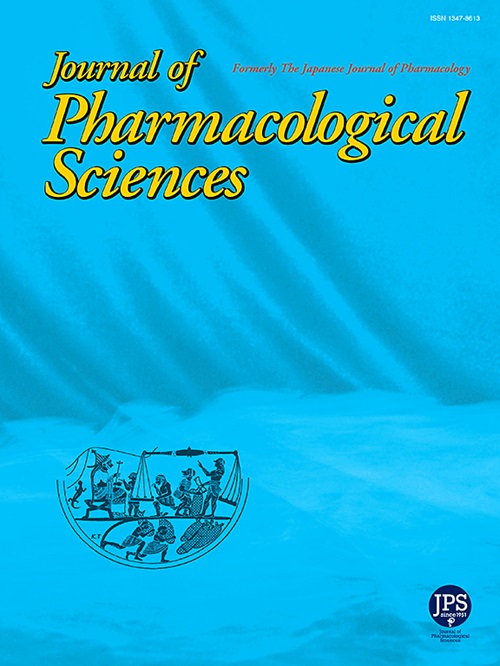Therapeutic potential of SMTP-27 in attenuating diabetic nephropathy with anti-inflammatory activity
IF 2.9
3区 医学
Q2 PHARMACOLOGY & PHARMACY
引用次数: 0
Abstract
Diabetic nephropathy (DN) is a leading cause of chronic kidney disease (CKD), affecting nearly one-third of CKD patients. As CKD advances, it may progress to end-stage renal disease, necessitating dialysis or transplantation. Hyperglycemia-driven metabolic and hemodynamic disturbances contribute to oxidative stress, inflammation, and fibrosis. Since current treatments remain insufficient, novel therapeutic strategies are urgently needed to halt DN progression. Stachybotrys microspora triprenyl phenols (SMTPs), the focus of our research, exhibit anti-inflammatory properties and have shown therapeutic potential in various disease models. We aimed to evaluate the efficacy of SMTP-27 in a DN mouse model. DN was induced by removing the right kidney of db/db mice. The efficacy of SMTP-27 was determined by evaluating the renal function using urine and serum samples and morphological assessment of the kidney tissues. For deciphering the mechanism of action of SMTP-27, markers associated with inflammatory signaling pathways in the kidney were detected. SMTP-27 (0.03, 0.3, 3, 30 mg/kg) dose-dependently improved the renal function. In addition, it improved the mesangial matrix overproduction, podocyte injury, and renal tubule injury and exhibited anti-inflammatory activity in the kidneys of mice with DN. These results indicate the potential of SMTP-27 as a novel therapeutic strategy for DN.
SMTP-27抗炎治疗糖尿病肾病的潜力
糖尿病肾病(DN)是慢性肾脏疾病(CKD)的主要原因,影响近三分之一的CKD患者。随着CKD的进展,它可能发展为终末期肾脏疾病,需要透析或移植。高血糖引起的代谢和血流动力学紊乱可导致氧化应激、炎症和纤维化。由于目前的治疗仍然不足,迫切需要新的治疗策略来阻止DN的进展。小孢子Stachybotrys microspora triprenyl phenols (SMTPs)是我们研究的重点,它具有抗炎特性,并在多种疾病模型中显示出治疗潜力。我们的目的是评估SMTP-27在DN小鼠模型中的疗效。通过切除db/db小鼠右肾诱导DN。SMTP-27的疗效通过尿液、血清和肾组织形态学评估来确定。为了破译SMTP-27的作用机制,检测了肾脏中与炎症信号通路相关的标志物。SMTP-27(0.03、0.3、3、30 mg/kg)呈剂量依赖性改善肾功能。此外,它还能改善DN小鼠肾系膜基质过剩、足细胞损伤和肾小管损伤,并表现出抗炎活性。这些结果表明SMTP-27作为一种新的DN治疗策略的潜力。
本文章由计算机程序翻译,如有差异,请以英文原文为准。
求助全文
约1分钟内获得全文
求助全文
来源期刊
CiteScore
6.20
自引率
2.90%
发文量
104
审稿时长
31 days
期刊介绍:
Journal of Pharmacological Sciences (JPS) is an international open access journal intended for the advancement of pharmacological sciences in the world. The Journal welcomes submissions in all fields of experimental and clinical pharmacology, including neuroscience, and biochemical, cellular, and molecular pharmacology for publication as Reviews, Full Papers or Short Communications. Short Communications are short research article intended to provide novel and exciting pharmacological findings. Manuscripts concerning descriptive case reports, pharmacokinetic and pharmacodynamic studies without pharmacological mechanism and dose-response determinations are not acceptable and will be rejected without peer review. The ethnopharmacological studies are also out of the scope of this journal. Furthermore, JPS does not publish work on the actions of biological extracts unknown chemical composition.

 求助内容:
求助内容: 应助结果提醒方式:
应助结果提醒方式:


